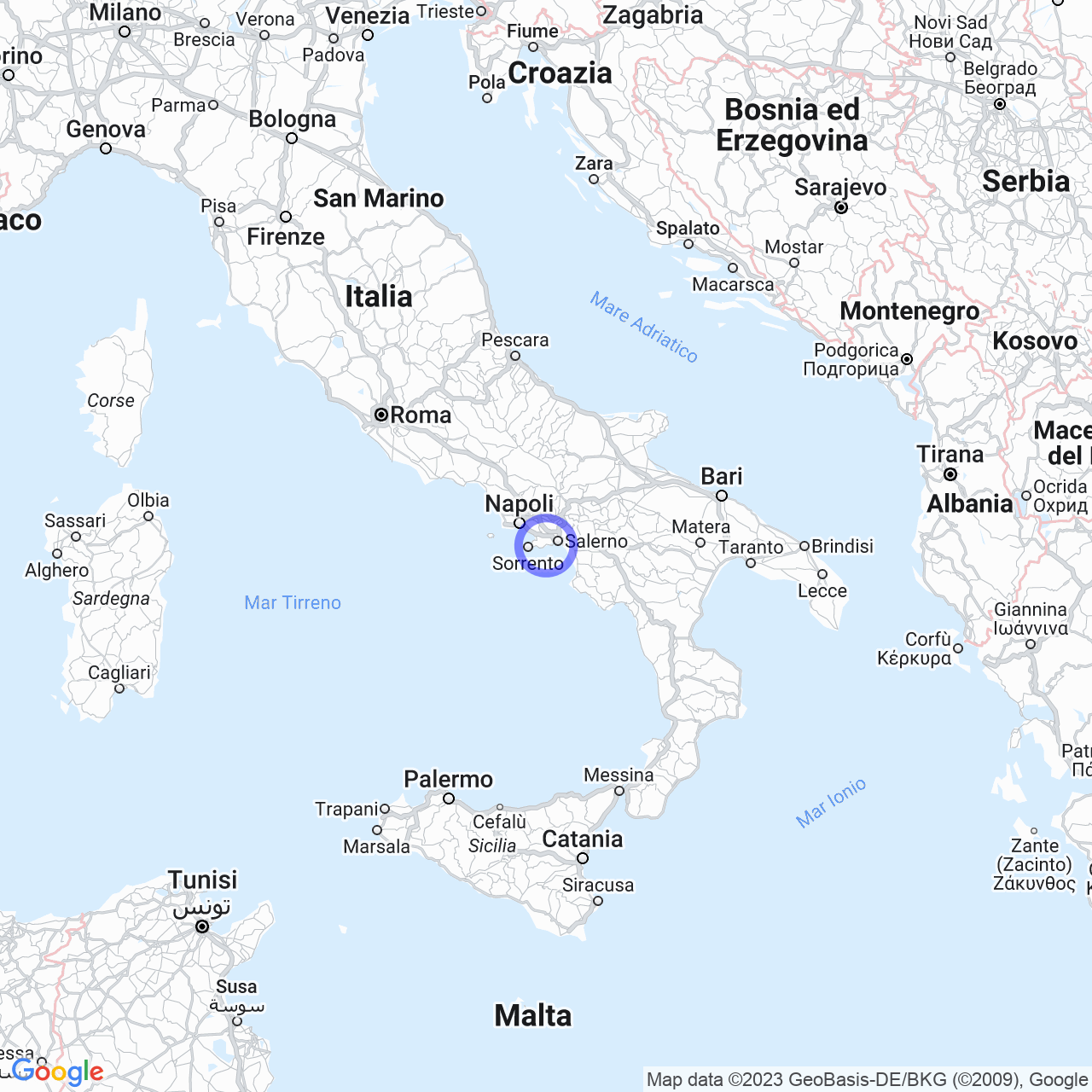Atrani
Welcome to Atrani: the Pearl of the Amalfi Coast
Welcome to Atrani, a small town located in the province of Salerno, in Campania. With its 806 inhabitants, Atrani is the quintessential Italian coastal town, with its narrow and winding streets that make their way through colorful houses and stunning views of the sea. But let's delve into the history of this small coastal gem.
Physical Geography

Density
With an area of only 0.1206 km², Atrani ranks among the last 100 Italian municipalities in terms of territorial extension. However, don't be deceived by its size: the population density is the highest in the province of Salerno.
Territory
Atrani is situated between Mount Civita to the east and Mount Aureo to the west, and extends along the valley of the Dragone River. The name Atrani derives from the view of these two mountains, which seem to form a cave that protects the city.
The urban area of Atrani occupies almost the entire extension of the municipality. To the south, the houses are protected from the sea by the Bourbon viaduct, which has created a beautiful artificial beach. The urban fabric extends on both slopes of the two mountains, reaching the Church of the Maddalena to the east and the gallery that leads to Amalfi to the west. The houses form a labyrinth of staircases and squares, interrupted by the square with the Church of San Salvatore de Birecto and the Moorish-style fountain, and by the course that covers the riverbed. This labyrinth of houses extends to the lemon cultivated terraces, which however belong to the territory of Ravello.
Climate
The climate is typically Mediterranean, with mild and rainy winters and moderate, sunny and never too hot summers. The average temperature in January is 10.7°C and in August it is 26.8°C.
History
The origins of Atrani are still unknown. Archaeological research has shown that in the 1st century AD, along the Amalfi coast, there were Roman villas that, buried by material erupted from Vesuvius in 79 AD, had collapsed downstream. In the 5th century AD, due to barbarian invasions, many Romans who had fled the cities took refuge on the Lattari Mountains and subsequently along the coasts, where they founded permanent settlements.
The first documentary evidence of the existence of Atrani dates back to 596, when Pope Gregory the Great wrote to Bishop Pimenio.
The Duchy of Amalfi extended from Cetara to Positano, including also Agerola, Pimonte, Lettere, the island of Capri and the archipelago of the Sirens. Atrani was a borough that could boast the title of twin city with Amalfi and seat of the aristocracy. Here lived the richest and most powerful families of Amalfi, the Pantaleoni, the Alagno, the Comite Mauro, the Comite Iane, the Augustariccio and the Viarecta. The inhabitants of Atrani preserved their own identity, different from that of the other inhabitants of the Duchy, who were called "Amalfitani".
Only the Amalfitans and the Atrans had the right to elect or depose the leaders of the Duchy.
Conclusion
Atrani is an unmissable stop on your visit to the Amalfi Coast. With its colorful houses, its beautiful beach, and the sweet terraces cultivated with lemons, Atrani is a true hidden gem of Campania. Come visit Atrani and discover the magic of an intimate and authentic city.
